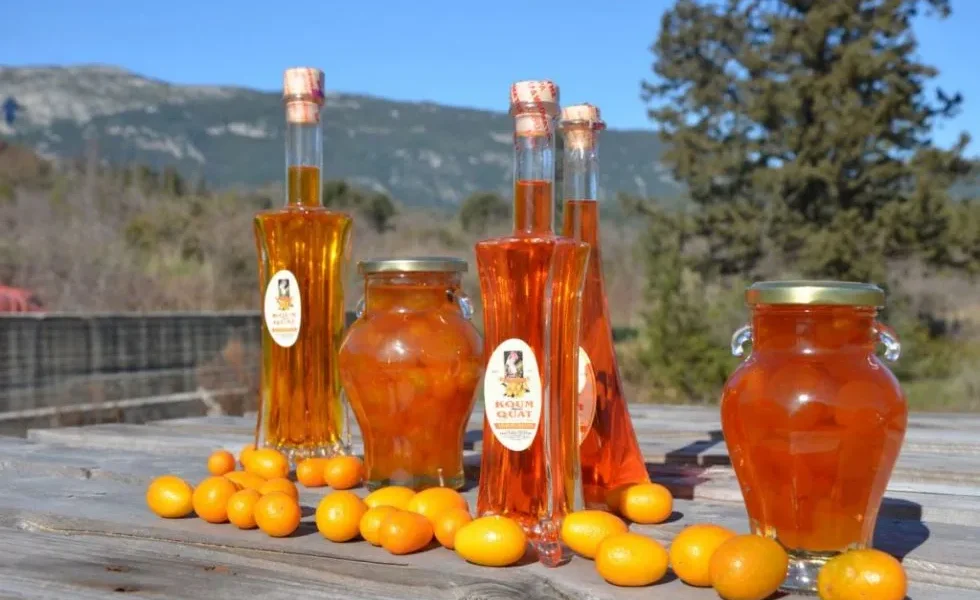The term “kumquat” translates to “golden fruit,” and this exquisite gem was brought to the shores of Corfu by an English agronomist in 1860. Since then, the kumquat has blossomed into a principal agricultural treasure of the island.
The Marumi kumquat tree, also known as such, yields petite, round or oval-shaped, golden-yellow fruits with sweet peels. The pulp, albeit bitter, is a sought-after ingredient for spoon sweets, marmalades, and jellies. Consuming raw kumquats is also a possibility.
The hue of the liqueur determines its source—whether it is crafted from the rind or the fruit itself. A vibrant orange hue signifies a skin-derived liqueur.
This delectable elixir boasts both sweetness and an intoxicating fragrance. Its robust flavour makes it ideal for cocktails and enhancing creams, puddings, and other desserts.
On the other hand, the white variety of the liqueur is notably less sweet. It is commonly enjoyed after meals, akin to the tradition of serving ouzo, tsikoudia, and tsipouro in other parts of Greece.
Throughout Corfu, local enterprises produce an array of culinary delights from this fruit. Kumquat syrup serves as a delightful topping for Greek yogurt, while marmalades and even cookies are infused with its distinctive flavour.
The Historic Tapestry of Corfu Island Corfu stands as one of Greece’s most captivating and storied islands. Its name also graces its largest city and capital of the Ionian island cluster, which lines the shores of the Ionian Sea.
A visit to Corfu offers a window into authentic Greek island life. The island’s picturesque landscapes, majestic mountain ranges, and pristine beaches rank among the nation’s most unforgettable. Its cultural tapestry reflects diverse influences, from French and English to Venetian and, naturally, Greek, providing a unique glimpse into the evolution of Ionian island culture.
Corfu’s history traces back to ancient Greece and its rich mythology. Known as Kerkyra in Greek, it harkens back to the nymph Korkira. According to myth, Poseidon, the sea deity, falls in love with Korkira, abducts her, and whisks her away to the island now bearing her name.
Legend tells of Poseidon and Korkira’s offspring, the Phaeacians. Another remarkable myth features Corfu as a pivotal backdrop. During Odysseus’ Odyssey home to Ithaca, he becomes shipwrecked on Corfu’s shores. The benevolent Phaeacians aid him on his journey homeward.
Corfu’s role in ancient Greek mythology is no accident. Archaeological evidence traces human settlements on the island back to the Paleolithic era. Corfu was inhabited before it emerged as an island when the surrounding sea was a lake until the Ice Age’s conclusion, around 10,000 to 8,000 BC.

